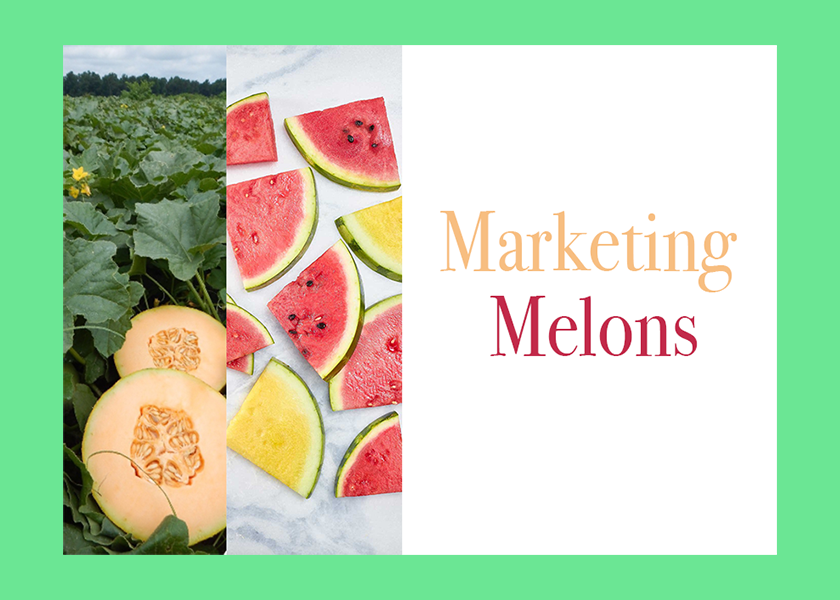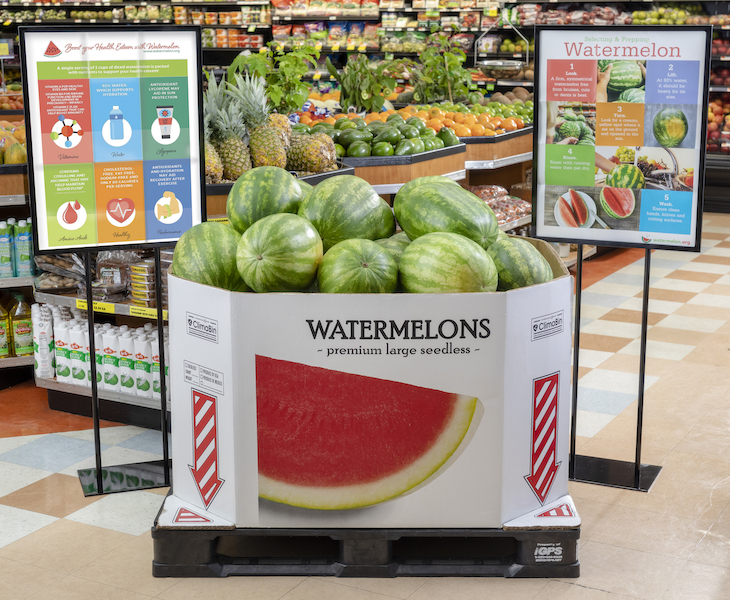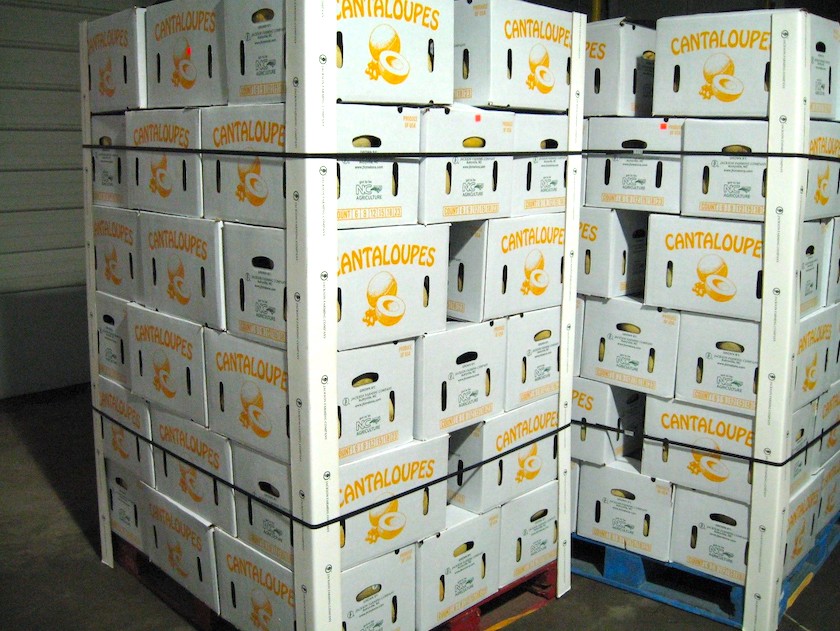Traditional, value-added, alternative melons all expected to sell

Shoppers want what they can’t have.
Because more than 90% of U.S. watermelons these days are seedless, consumers are starting to ask for seeded watermelons, said Mark Arney, executive director and CEO of the National Watermelon Promotion Board.
“There are still a lot of people who like it and grew up with it, and you’ve got to have it for seed-spitting contests,” Arney said.
“It used to be that seeded watermelon was priced lower, when seedless was the new thing. Now it’s flipped because now it’s hard to get seeded watermelon, because production has shifted toward seedless.”
Regardless of the to-seed-or-not-to-seed conundrum, melons in general are a good deal.
Whole watermelon has the lowest cost per serving out of all fruits sold at retail, followed by bananas, according to a 52-week IRI study in 2020 about budget-friendly produce.
“It’s very economical,” Arney said.

Cantaloupes were also comparably low-priced per serving in some regions of the U.S.
And out of all fresh produce, watermelon tied with potatoes for the lowest price per serving.
Fresh-cut watermelon, a growing segment, had an average U.S. retail price of $2.11 per pound, compared to whole watermelon, at 35 cents per pound in 2020-21, according to IRI.
Considering the steeper price for fresh-cut, it may be no shock that whole watermelon has held onto an 80.1% sales share in 2020-21, compared to cut watermelon, at a 13.6% sales share.
Seedless melons aren’t fading out anytime soon from the product line offered at Autryville, N.C.-based Jackson Farming Co., which grows and sells seeded and seedless watermelon, Eastern cantaloupe and honeydew.
“Watermelons and cantaloupes enjoyed a good season last year from a demand standpoint, and we are expecting the same, with increases in seedless watermelons this year,” said Matt Solana, vice president of operations and supply chain.
Solana is increasing the plantings of seedless watermelon by 20%, for a total of 700 seedless watermelon acres, 100 seeded watermelon acres and 300 cantaloupe acres.
Because of increases in labor, freight and fuel costs, the f.o.b. rate will have to go up also to offset these costs, he said.
Los Angeles-based Pacific Trellis Fruit/Dulcinea Farms has added a Georgia program to its portfolio and is adding to its current offerings of conventional and organic PureHeart mini seedless watermelons, Sugar Daddy seedless watermelons, SunnyGold mini seedless watermelons, Tuscan-style extra sweet cantaloupes, Sugar Kiss melons and Summer Kiss melons.
“We are very excited to be adding Honey Kiss and Golden Kiss melons to our portfolio this year and building on what we did last year with the Kiss program,” Corrie Hutchens of Pacific Trellis Fruit said.
Retailer expectations for melon demand this spring and summer are pretty optimistic overall, Arney said.
“I think there’s pent-up demand from supplies being lower from Mexico and South America,” he said, mentioning bad weather in Mexico that reduced volume.
Alternative melons with yellow, orange and red flesh in various shapes may expand from their niche markets, he said.
“I think you’re actually going to see an increase in some of these different flesh-colored watermelons,” Arney said about a big retailer doing well in 2020 with these less-common varieties in traditional markets.
“Why? I couldn’t tell you. They may have wanted to try different color combinations in merchandising.”
When it comes to the numbers, big, red, juicy watermelon wins the popularity contest among melons, by a long shot.
Watermelons
Harvested acres of watermelon are more than double that of cantaloupe, the runner-up. Following in the distance is honeydew, with less than a third of cantaloupe’s harvested acres, according to the U.S. Department of Agriculture.
The production value of fresh-market watermelon in the U.S. was $574 million in 2020, compared to $545 million in 2019 and $662 million in 2018.
The giant melon’s top-producing states contended with one another across the Southeast, South Central and Southwest harvest acreage and production value in 2020:
- In Florida, watermelon has the third highest production value of all specialty crops, after oranges and tomatoes, at $157.5 million from 25,200 harvested acres;
- Georgia isn’t far behind with $122.5 million in watermelon production value from 18,600 harvested acres in 2020;
- California saw a watermelon production value of $92.6 million from 9,500 harvested acres;
- The watermelon crop in Texas was valued at $61 million from 19,000 harvested acres; and
- In Arizona, the watermelon crop value was $28.9 million from 4,700 harvested acres in 2020.

Cantaloupe
2020 was a good year for fresh-market cantaloupe production dollars at $295.7 million, compared to $237.8 million in 2019 and $331.5 million in 2018, according to the USDA.
California’s cantaloupe production value was $184.3 million from 21,900 harvested acres in 2020.
Arizona does a good cantaloupe crop, valued at $82.5 million from 13,000 acres in 2020.
Florida cantaloupes are also worth mentioning, with a $13.8 million production value from 1,900 harvested acres in 2020.

Honeydew
This melon didn’t do as well in 2020, compared to the others in the Big Three.
Honeydew’s production value in the fresh market was $49.2 million in 2020, compared to $55.4 million in 2019 and $75.3 million in 2018, according to the USDA.
California’s honeydew crop was valued at $49.2 million from 7,600 harvested acres in 2020.







